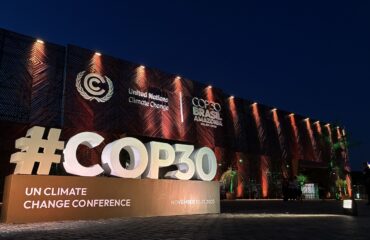
Buddy Alder, a Leon County farmer, stands in a rye grass field intended for biofuel production. Image: USDA NRCS Texas
By James Myers
As concerns mount about the potential for human activity to cause irreversible damage to Earth’s natural environment, the rapid pace of investment and progress in clean technologies is bringing hope for a sustainable future.
Energy production is a major cause of environmental harm, particularly from non-renewable sources like oil and gas with the damage they cause during ground and ocean extraction as well as toxic pollution. Renewable energy is, however, increasing as a proportion of the world’s power consumption, and it has become a focus of global discussion.
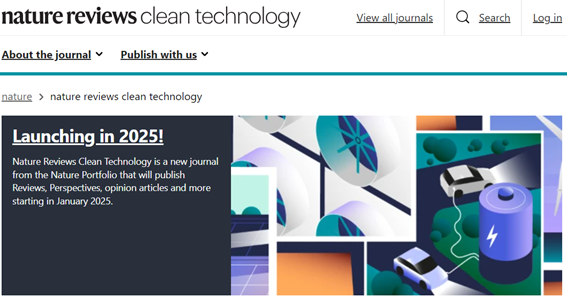
Next year, the prestigious journal Nature is launching a publication dedicated to clean technology.
The European Patent Office reports that the single market of the European Union of 27 nations is a catalyst for advancing clean energy investment.
The report found that in the EU, “cleantech inventions surged by 33% from 2016 to 2021,” with 750,000 clean technology inventions accounting for 12% of all inventions during the 6-year period. The fact that patents can be registered more simply and less expensively in 17 of the EU’s member states is credited with accelerating the cleantech in Europe.
The U.S. Energy Information Administration (EIA) states that renewable energy accounted for 6% of the world’s consumption in 2022 of 600.6 quadrillion British Thermal Units (Btu’s), equivalent to about 634 quintillion metric Joules (which is 634,000,000,000,000,000,000 Joules). That’s enough to power about 1 trillion LED light bulbs for an entire year. While renewable energy’s share of total consumption is increasing – in 2018, the EIA pegged it at 5% of global consumption – a much more rapid increase is needed to meet globally agreed targets for carbon pollution reduction.
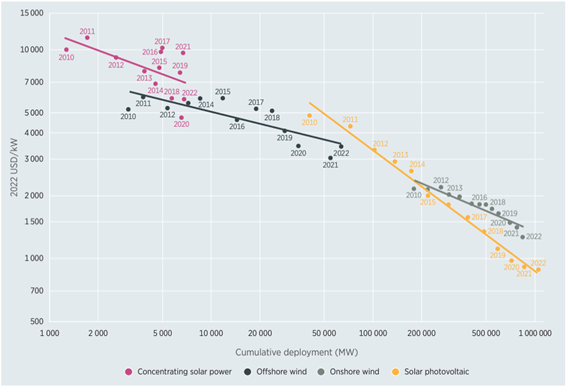
“The global weighted average total installed cost learning curve trends for solar PV, CSP, and onshore and offshore wind, 2010-2022”. International Renewable Energy Agency. Renewable Power Generation: Costs in 2022 (p. 57).
Solar energy’s contribution to renewable energy production has been increasing significantly, as the technology becomes more efficient and much less costly to produce and deploy.
It’s estimated that most of the world’s population lives in areas that receive between 12 million and 25 million Joules per square metre of energy daily of free energy from the sun, which is enough to power on LED light for every square metre through an entire night, 365 days of the year.
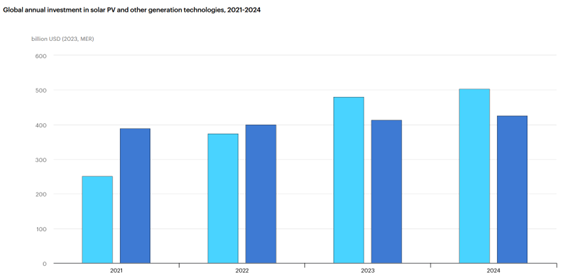
The International Energy Agency’s World Energy Investment 2024 report indicates that “Investment in solar PV [photovoltaic] now surpasses all other generation technologies combined.” The light blue bars in this graph represent solar PV investment, while the dark blue bars represent all other energy investments.
In June, 2023, The International Energy Agency reported its finding that global investment in clean energy and infrastructure will amount to $2 trillion this year, which is two-thirds of total energy investment in 2024. The IEA defines clean energy to include renewables like solar, electric vehicles, nuclear power, grids, storage, low-emissions fuels, efficiency improvements and heat pumps.
Sunlight can be used not only for direct energy production by solar cells, but it is also being studied as a means to convert water into hydrogen as well as to reduce plastic pollution.
Hydrogen is a significant fuel source for several chemical processes and is also a promising source of clean energy in fuel cells (see “Will Hydrogen-Powered Vehicles Soon Provide a More Environmentally-Friendly Alternative to EV’s?” in this edition) that could one day power vehicles. Transportation currently accounts for approximately one-quarter of global energy-related CO2 emissions. However, producing one ton of hydrogen using a process called steam methane-reforming releases approximately 8.6 tons of carbon dioxide pollution.
A new study is exploring ways that sunlight can be used in the efficient production of hydrogen as well as breaking down plastic, which according to the United Nations Environment Program comprises 85% of the total weight of debris in the oceans.
Beyond solar cells, there are some intriguing new clean energy technologies under development.
One relatively new technology, conceived eight years ago, is called elastocaloric heating and cooling. The World Economic Forum placed elastocaloric technology among the top 10 emerging technologies of 2024 that will impact the world.
Using materials like nickle and titanium, elastocaloric systems promise a sustainable alternative to traditional heating and cooling systems that rely on environmentally damaging refrigerant gases, and will be especially important in areas of the world with limited access to electricity. The use of air conditioners and electric fans accounts for approximately 20% of the total electricity used in buildings around the world today.
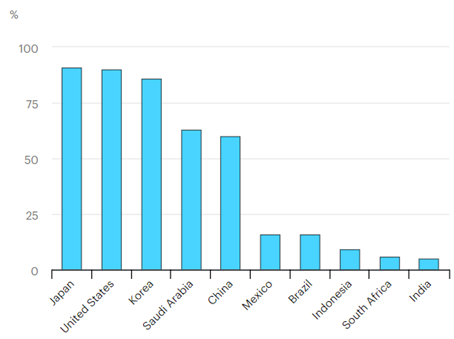
Percentage of households equipped with air conditioning in selected countries, 2018. The Future of Cooling – International Renewable Energy Agency
A research team led by Dr. Ishiro Takeuchi, of the University of Maryland, developed an elastocaloric system that shows promise for commercialization.
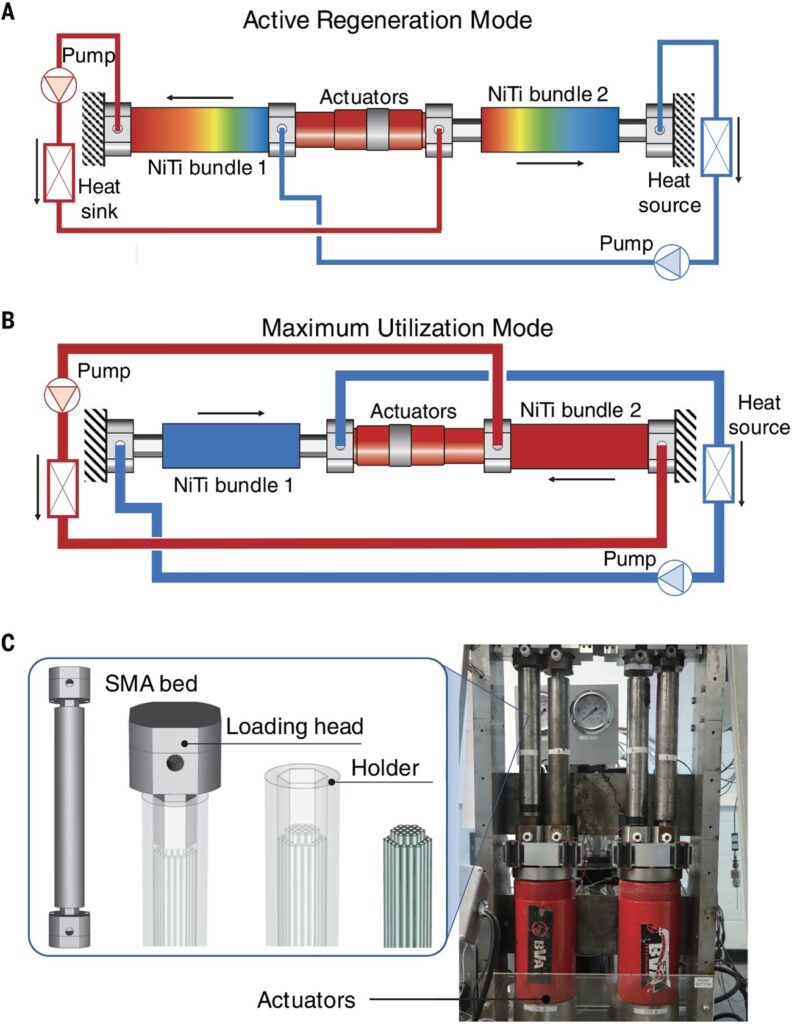
Image of elastocaloric heating assembly by Ichiro Takeuchi and co-authors, published in the journal Science .
Elastocaloric heating and cooling operates with metallic alloys like nickle titanium (NiTi), which generate large amounts of heat when under tension, and absorb heat to provide cooling when the tension is released. The major technical hurdle had been the production of NiTi wires with sufficient flexibility that would endure many cycles of tension and release without breaking, but Dr. Takeuchi and team developed a means of extending the life of the wires by pumping water through bundles of NiTi tubes.
Hydrogen fuel cells offer further promise for a clean future.
Electric vehicles are exploding in popularity. According to the International Renewable Energy Agency – Trends in Electric Cars, “nearly one in five cars sold in 2023 was electric. Electric car sales neared 14 million in 2023, 95% of which were in China, Europe and the United States”.
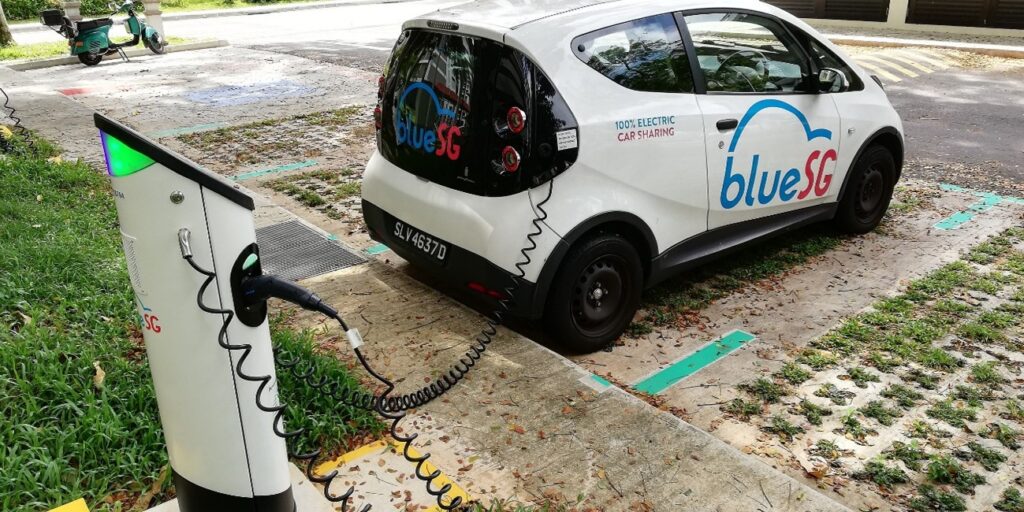
A fully electric car charging its batter at a public charging station in 2020. Image: Wikipedia.
Instead of drawing electricity from a charging station and storing the power in heavy batteries, as most electric vehicles now do, vehicles can be powered electrically by a hydrogen fuel cell which produces its own electricity and emits only water through the tailpipe.
In a hydrogen fuel cell, a chemical reaction between hydrogen and oxygen produces electricity. Unlike most electric vehicles, however, a vehicle powered by a hydrogen fuel cell requires only about five minutes for refuelling.
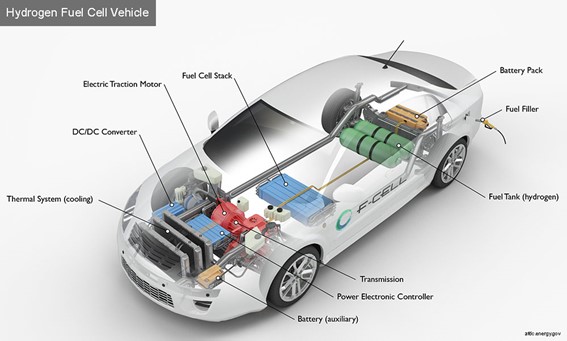
Image: U.S. Department of Energy.
As hydrogen fuel cell technology is evolving, Car and Driver reports that as of this April there were only 17,000 hydrogen-fuelled vehicles on the road in the U.S., all of them in California. Currently, Honda, Hyundai, and Toyota offer one hydrogen-powered vehicle each, and advancement of the technology is limited both by the power output and availability of refuelling stations.
A significant drawback with the popularity of electric vehicles, as we reported last September in Clean Technologies and Technologies That Clean, is that the mining and processing of lithium for only 100 EV batteries requires a staggering 2 million metric tons of water. Hydrogen fuel cells might provide an answer to the environmental cost of the EV revolution that’s sweeping the planet.
Another study is exploring efficient means of hydrogen production using “novel heterogeneous nanocomposites.” The study is looking at the ability of elements like gold, copper, platinum, or nickle to extend the light response to enable more efficient hydrogen production, with the ultimate goal being “to design a catalyst system that can produce hydrogen using visible light, making local hydrogen production feasible even in remote areas with limited access to electricity.”
The future of clean technology is in sight.
Whether it’s hydrogen fuel cells or solar energy, a combination of the two or something else, there is clearly an emerging fervor for sustainable energy production technologies.
Odds are that economic bets on clean energy production will be rewarding, but the question remains by how much and in what time frame? And how long can we afford to gamble on the future of Earth’s natural systems?
We would love to hear what you think of this article.
☞ Click here to complete our 2-minute Reader survey.
Craving more information? Check out these recommended TQR articles:
- Progress in Superconductivity Holds Promise for Clean Energy, Medicine, Quantum Computing, and More
- Advances in Nuclear Fusion Technology are Fueling the Dream of Limitless Clean Energy
- Clean Technologies and Technologies That Clean: Undoing the Climate Damage We Have Caused
- Harnessing Ocean Power: New Technologies Hold Promise for Clean and Cost-Effective Energy
- In Wiki Loves Earth Photos, Observers Share a Deep Knowledge of Nature’s Incredible Integration

